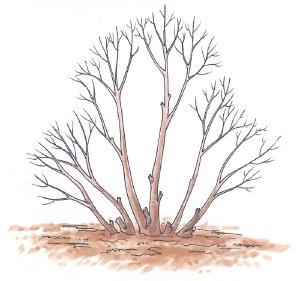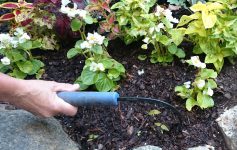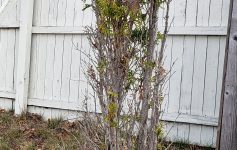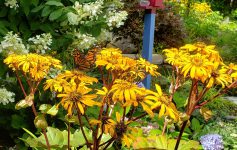
It is easy enough to get out the loppers and hack away at your plants in a weekend warrior style fashion. Yes I must admit, there is something cathartic about the hum of power shears and sharpened tools in hand. But ultimately for you and your plants sake, you may want to take some time to understand what you want to accomplish and how best to do it. Visualize Miyagi the martial arts master in the Karate Kid with his selective bonsai pruning: think patience and purpose!
Generally, if you are about to haul out the cutting tools, there has to be a reason: removing dead wood, formative pruning, regenerative pruning and hedge trimming. So as you look out your window and watch the snow melt, give some thought to why you want to prune
It is always a good time to remove dead wood from your trees and shrubs. You can schedule this whenever you choose. But be sure it is dead. If doing so during the dormant stage of the plant material, appearances can be deceptive. I employ a “scratch test” to be sure. You scratch the bark and look for green before you cut. If you suspect this wood is diseased…be sure to disinfect your pruners between each cut with a 10% bleach solution to avoid reinfecting the tree.
Formative pruning is an effort to control the size, enhance the shape, correct structural defects, preventative maintenance and to encourage certain growth habits of your trees and shrubs. I use this primarily during the early spring before leaf out occurs. I find it much easier to view the structural bones of the shrub/tree. It also makes for an easier clean up. Woody plants size can be controlled using this approach. I also do a limb up to create a clearance under the canopy or expose attractive trunks. Any one of two rubbing limbs should be removed to reduce potential for disease and provide overall strength to the total tree. Spindly branches that have broken due to snow load or winds or has the potential for future damage should be pruned. It is also good to prune away suckers from the bases of trees.
Regenerative pruning is thinning and cutting back to rejuvenate or increase flower buds. Many common shrubs need this periodic hard pruning to promote vigorous growth. I find this especially true with the many of the spirea varieties. I usually cut the shrub back a good third in the early spring. You can also prune exclusively 1/3 of the oldest canes all the way to the base. Many fast growing shrubs become leggy and weak. So thinning back to fewer, but stronger stalks will strengthen the plant.
If you wish to maintain a dense hedge, it will require pruning. Sadly many folks don’t realize this until they experience the thinning plants material years down the line. I subscribe to a rounded top versus flat top to manage snow loads better and provide the necessary wideness at the base so the light hits the surfaces. In general, hedge trimming is done early spring before new growth and then again in July in our area to keep shape and allow new shoots to harden off for the winter
Generally the best time to prune almost everything is early spring before leaf out. However the exceptions are trees and shrubs that grow on last years wood. They are setting up their buds for bloom. So stay
away from forsythia, lilac, hydrangea (Endless summer varieties boast bloom on old and new wood), rhododendron and azalea, until after bloom. It is good to prune lilac about 2 weeks after bloom, as they set flower buds up for next year almost immediately.
Cornell University Cooperative Extension had a great Guide for Planting and Maintaining Trees and Shrubs written by Richard Weir. Not sure if it is still in print. You may try going to the publications website @ www.cce.cornell.edu/store



